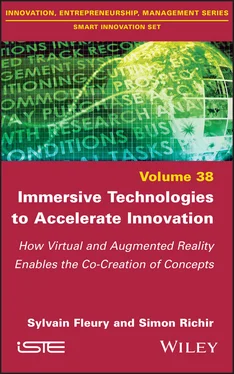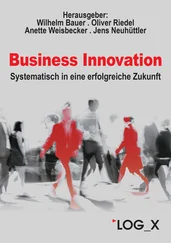The creation of a blue ocean market should not be confused with technological innovation. Technological innovation is certainly a factor in the development of markets, but it is not necessarily the central determinant of the appearance of a new market. It is easy to find many examples of companies that have created new markets without technological innovation being the driving force:
– Starbucks, for example, corresponds only to a new use;
– Uber is technologically only a mobile application.
Conversely, a truly technologically innovative product may not open up a new market if it is not acceptable, useful, fun or easy to use. Google Glasses 1 were probably not a bad idea in themselves, but the technological ecosystem may not have been mature enough and there were some issues that made them unacceptable (discreet video recording, for example).
The companies that manage to go into a blue ocean are those that are successful in creating value by innovating. This value creation can come from a simplification of something that already exists, from a gain in time, productivity, pleasure, meaning, etc. In any case, technological innovation is only one way to open a market.
The blue ocean strategy should not be confused with differentiation. Differentiation consists mainly of making trade-offs on cost and service. Overall, it is about doing the same thing as a competitor, but cheaper or more high-end. Of course, when we create a low-cost equivalent of a product, we enlarge the potential customer base. However, if we have an effect on the market, we cannot say that we are really opening a new market in this case. Creating a new market is not about making a trade-off between quality and cost. It is not about being different from others, but about doing better. The limitation of this strategy is that even when a company manages to find a blue ocean, the advantage it gains is only temporary because other companies will quickly come along to take market share. In a way, the company that opened the market is the one that took all the risks, while those that follow have the ground already cleared in front of them.
Open innovation is an innovation management technique theorized in the early 2000s by Henry Chesbrough, a research professor at the University of Berkley. He did not invent this approach, but grouped under the name “open innovation” practices that he saw emerging in more and more companies. This is a mode of organization in which people outside the R&D department and possibly outside the company take part directly in the innovation process. This type of approach can be in tension with the widespread culture of secrecy in the field of innovation, since each company wants to avoid its competitors being able to anticipate or copy the innovations it is going to produce. Practicing open innovation therefore requires dealing with intellectual property issues upstream and with rigor.
1.3.1. The two types of open innovation
We classically identify two main categories of open innovation: inside-out and outside-in (Chesbrough 2003). Inside-out open innovation starts with a desire to apply a company’s technology to other markets in order to increase the return on investment or to anticipate a change in the market. For a large company, it is a matter of putting in place a small team to develop an area that does not fit into the global strategy. Extracting a team through a business creation allows us to benefit from the agility of a small company to find a new market. The best known example of inside-out is Adobe, which came about from a team from the Xerox research institute.
Outside-in open innovation is mobilized in cases where the company has a specific need for a skill or expertise that it does not possess internally. This may concern, for example, the desire to understand the opportunities and risks associated with the emergence of a new technology on the market. Typically, companies in sectors such as retail or insurance have seen the emergence of artificial intelligence for several years, and feel that this is likely to disrupt their business, constituting both a risk and an opportunity. In this case, they will look for external resources to innovate in this direction, because internal R&D is not specialized in this type of technology and will not be able to identify the opportunities. It can also concern the need to solve a technological or scientific problem for which the company does not have the internal expertise. In this case, open innovation is a way for the company to find external resources. This can take the form, for example, of numerous innovation competitions aimed at start-ups or hackathons in which groups of students must propose solutions to a problem encountered by the company.
In some cases, outside-in open innovation is not about generating ideas from expertise, but rather about having ideas selected by the community. For example, a company looking to quickly renew its product line can gather the community’s opinion to prioritize the products to be developed while being sure that they will meet consumer expectations.
1.3.2. The example of the MayAM challenge
For many years, our laboratory has organized the MayAM (for “ Mayenne-Arts et Métiers ”) open innovation challenge with groups of students from the Institut des Arts et Métiers de Laval specialized in immersive technologies. Each group of students is assigned an industrial company wishing to seize opportunities related to virtual and augmented reality technologies. They must then work for a week to imagine an innovative project for the company. The participating companies are part of an outside-in open innovation approach in the sense that they do not have the internal expertise to identify the risks and opportunities related to these technologies. Therefore, through MayAM, they must find an external resource that will do this work for them. The next logical step in this process is to integrate an expert resource, often through an intern, or a support service provided by the laboratory or a company.
1.3.3. Collaborative innovation
The organization of companies in silos often leads to a very low circulation of ideas. Also, beyond the exploitation of external resources, many companies under-exploit internal expertise. This is a form of open innovation, but rather thought at the level of a department, which we call collaborative innovation and which consists of making the circulation of ideas throughout the company more fluid by mobilizing the expertise of other departments.
Crowdsourcing is one of the classic tools of outside-in open innovation. The significant development of crowdsourcing in recent years is due to the rise of social networks that make it possible to create and manage communities around specific topics (Whitla 2009). The crowdsourcing process has been described by Trompette et al . (2008) as follows: the organization identifies an activity that it does not want to perform internally. Rather than outsource it in the traditional way, that is, have it performed by a service provider, the company chooses to crowdsource. In this case, it posts the specifications on the Internet (on a platform or on its own Website) and sets the terms of participation (schedule, remuneration, etc.). This allows a large number of individuals to work on the activity. The company then validates the contribution of each person, according to the specifications established in advance, and allocates the expected rewards.
The lead user concept was developed by Von Hippel, an economist at the MIT Sloan School of Management. To understand who the lead users are, we need to go back to the mechanics of innovation diffusion described by Everett Roger. According to this approach, we consider that when a product is launched, we will first have a few users called “innovators” who are few in number, but interested enough in innovations that they are very easy to convince to buy an innovative product. Then come the “early adopters”, who are a little more numerous and a little more resistant, although they are very interested in innovation, and so on, with the early majority, the late majority and finally the late adopters, who are only likely to be interested in an innovation when it is very widely diffused and established in society. In Von Hippel’s conception, the lead users are the few individuals who are even further upstream than the innovators described by Everett Roger, that is even before the commercial release of the product.
Читать дальше












